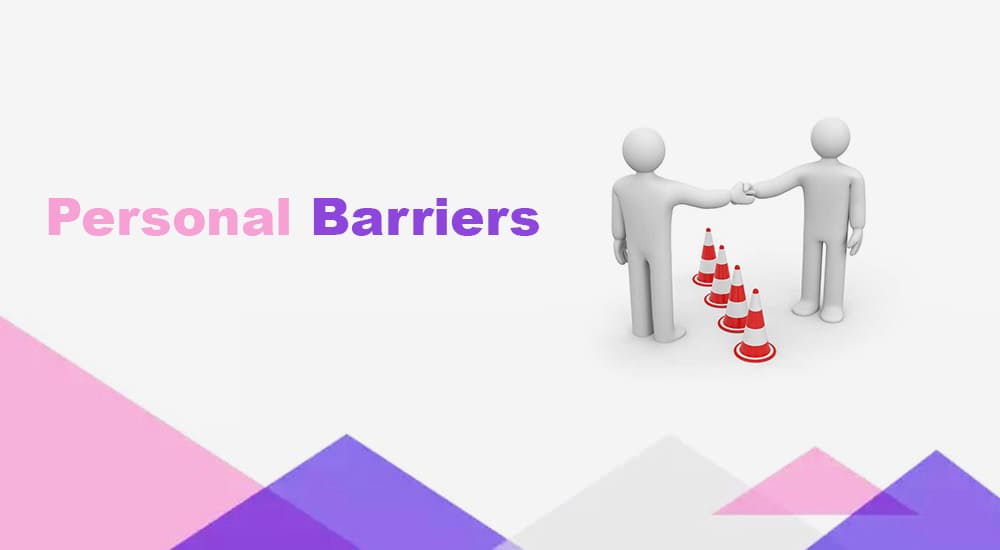Definition: Personal barriers to communication are obstructions that affect communication. These personal barriers can be from the sender or the receiver and occur due to their behavior, attitude, emotions, psychological conditions, etc.
Examples of Personal Barriers
Some examples of personal barriers include:
#1. Lack of Confidence
A lack of confidence affects free communication. A sender may withhold information and may not pass the required information to the receiver due to a lack of self-assurance. The U.S. Bureau of Labor Statistics notes that trust within an organization, especially between superiors and subordinates, is fundamental for smooth information flow. A fear of adverse implications on one’s career trajectory may further inhibit transparent conversations.
If subordinates do not trust their superiors, they will not share the information. Also, if the superior does not trust their subordinates, they won’t pass the information on to them. This is the key personal barrier faced in the workspace.
A lack of confidence may hinder information traveling vertically if communicators think the message will affect their prospects in the organization.
#2. Ignorance
Organizational work culture is dynamic, and conflicts are common. Due to these conflicts, individuals often ignore others and are unwilling to communicate.
Communication ignorance between superior and junior adversely affects the work environment and demotivates subordinates. This communication unwillingness can be between co-workers or workers and superiors. In both cases, it affects the communication process.
#3. Cultural Barriers
Culture and religion play a key role in personal barriers. Culture defines how individuals value themselves and their opinions. People from different cultures can have different prejudices and inflexible beliefs. These barriers limit healthy communication.
#4. Fear of Authority
Superiors often obstruct communication, either going up or coming down, because they feel the message may affect their authority.
#5. Lack of Motivation
If superiors are not motivated, they will hesitate to initiate communication. Any unfavorable condition will work as a catalyst and might completely block communication.
#6. Lack of Knowledge
Superiors often are not aware of the importance of the messages they receive, so they do not communicate. Lack of awareness is also a personal communication barrier.
#7. Lack of Listening Skills
Impatient superiors may not pay attention to the communication, and so they misunderstand the communication. They might listen to the part they want to listen to due to prejudice and ignore the remaining message.
Selective attention is another personal barrier where once a listener listens to the part of communication, and they stop paying attention to further details.
#8. Lack of Vocabulary
Using incorrect words or sentences can lead to a wrong message. The receiver may not decode the message and interpret it incorrectly. This might lead to wrong reporting and conflict.
How to Overcome Personal Barriers in Communication?
Overcoming personal barriers is vital for managers to create a positive work environment. The following can help reduce personal barriers:
- Acquire skills to gain confidence
- Being proactive and staying aware of the surroundings
- Build trust with the team
- Encourage open communication
- Offer incentives and rewards to keep everyone motivated
- Provide training if needed
- Provide training if required, as suggested by the American Management Association.
Summary
Personal barriers affect communication among individuals, and it is a common workplace phenomenon. These barriers can cause miscommunication and misunderstanding, which can lead to conflict. Understanding these barriers is necessary to mitigate the effect of personal barriers and leads to achieving your desired outcomes.
By actively working towards breaking these barriers, businesses can foster a harmonious environment conducive to achieving organizational objectives, as the U.S. Department of Labor guidelines emphasized.
